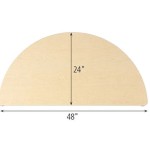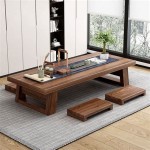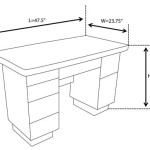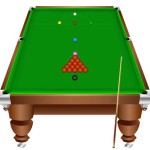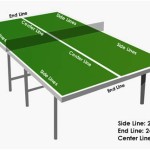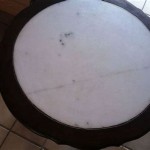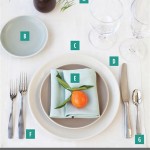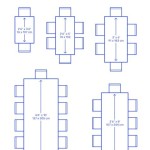8 Foot Pool Table Measurements: A Comprehensive Guide
The 8-foot pool table, often referred to as a "pro 8" or "bar box" table, strikes a balance between the regulation size of a 9-foot table and the more compact 7-foot table. This size offers a challenging yet manageable playing experience, making it a popular choice for home game rooms, bars, and recreation centers. Understanding the precise measurements and specifications of an 8-foot pool table is crucial for optimal gameplay, proper installation, and selecting appropriate accessories.
This article will provide a detailed overview of the standard measurements for an 8-foot pool table, covering everything from the playing surface dimensions to the height and thickness of the various components. This information will be valuable for potential buyers, installers, and anyone seeking to upgrade their existing pool table.
Playing Surface Dimensions: The Heart of the Game
The playing surface of a pool table, defined as the area within the cushions or rails, is the most critical measurement. For an 8-foot pool table, the standard playing surface dimensions are 44 inches wide and 88 inches long. This translates to a 2:1 aspect ratio, which is a fundamental characteristic of all standard pool tables, regardless of their overall size. This ratio ensures consistent gameplay and predictable ball behavior.
It is important to note that these are nominal dimensions, and slight variations may exist due to manufacturing tolerances. Reputable manufacturers adhere to these specifications as closely as possible to maintain the integrity of the game. When measuring a pool table, it is recommended to take measurements at multiple points along the width and length to ensure accuracy and identify any potential discrepancies.
The playing surface is typically constructed from slate, a dense and durable material that provides a perfectly flat and stable surface for the balls to roll on. Slate thickness can vary, but a minimum of 1 inch is recommended for an 8-foot table to prevent warping and ensure long-term stability. Some higher-end tables may utilize thicker slate, such as 1.25 inches, for even greater rigidity and resistance to movement.
The accuracy of the playing surface dimensions directly impacts the gameplay experience. A playing surface that deviates significantly from the standard dimensions can alter the angles of shots, making it more difficult to accurately predict the ball's trajectory. This can be particularly frustrating for experienced players who are accustomed to the predictable behavior of a correctly sized table.
Overall Table Dimensions: Accounting for Rails and Frame
While the playing surface dimensions are paramount, the overall dimensions of the 8-foot pool table must also be considered. The overall length and width include the rails (cushions), frame, and any decorative trim. These dimensions are crucial for determining the space required to accommodate the table in a room. Typical overall dimensions for an 8-foot pool table are approximately 53 inches wide and 99 inches long.
The height of the table is another important factor. The standard height from the floor to the top of the playing surface (the top of the cushions) is typically between 29.25 inches and 31 inches. This height is regulated to ensure comfortable play for individuals of varying heights.
The frame of the pool table provides structural support for the slate and other components. It is typically constructed from hardwood, such as maple or oak, to ensure strength and durability. The frame should be robust enough to support the weight of the slate and withstand the forces generated during gameplay.
The rails, also known as cushions, are attached to the frame and provide the rebounding surface for the balls. They are typically made of a rubber compound that is carefully formulated to provide consistent and predictable ball rebound characteristics. The profile and angle of the cushions are critical for accurate shot-making.
The cloth covering the playing surface and rails is another important component. The cloth should be tightly stretched and free of wrinkles or imperfections to ensure a smooth and consistent playing surface. Various types of cloth are available, with different compositions and weaves that affect the ball's speed and spin.
Pocket Specifications: Size, Placement, and Cut
The pockets are integral to the game of pool, and their specifications are carefully defined to ensure fair and consistent play. The size, placement, and cut of the pockets all contribute to the overall playing experience. For an 8-foot pool table, the corner pockets are typically narrower than the side pockets, posing a different challenge to players.
The corner pockets typically have an opening width of between 4.5 inches and 4.75 inches. The side pockets, located along the long rails, are generally wider, with openings ranging from 5 inches to 5.25 inches. These dimensions allow for a degree of error while still requiring precision and skill.
The pocket cut refers to the angle and depth of the pocket opening. A sharp, deep cut can make it easier to sink balls, while a shallower, more rounded cut can make it more challenging. The pocket cut is a matter of preference and can vary depending on the playing style and skill level of the players.
The placement of the pockets is also critical. The corner pockets should be positioned precisely at the corners of the playing surface, and the side pockets should be centered along the long rails. Any deviation from these positions can affect the angles of shots and make it more difficult to accurately predict the ball's trajectory.
The pocket facings, which are the surfaces that guide the ball into the pocket, should be smooth and free of any imperfections. Any rough edges or irregularities can deflect the ball and prevent it from sinking. Regular maintenance of the pockets, including cleaning and replacing worn facings, is essential for maintaining optimal gameplay.
The "pocket tightness" is a subjective term that refers to the overall difficulty of sinking balls on a particular table. Tighter pockets require greater precision and accuracy, while looser pockets are more forgiving. The pocket tightness is influenced by several factors, including the pocket size, cut, facings, and the overall condition of the table.
In addition to the standard dimensions, the American Poolplayers Association (APA) and other governing bodies may have specific regulations regarding pocket sizes and other table specifications for sanctioned tournaments and leagues. These regulations are designed to ensure a level playing field for all competitors.
Slate Thickness and Support: Ensuring a Level Playing Field
As previously mentioned, the slate bed is the foundation of any pool table, providing the flat and stable surface necessary for accurate ball roll. For an 8-foot table, a slate thickness of at least 1 inch is recommended, with 1.25 inches being preferable for increased stability and resistance to warping. The slate is typically composed of multiple pieces, often three, which are carefully leveled and joined together to create a seamless playing surface.
The support structure beneath the slate is equally important. The frame must be robust enough to uniformly support the weight of the slate and prevent sagging or flexing. The frame is typically constructed from hardwood and may include crossbeams and other reinforcement elements to enhance its strength and rigidity. The legs of the table should be securely attached to the frame and designed to distribute the weight evenly across the floor.
Proper leveling is crucial for optimal gameplay. Even a slight deviation from level can significantly affect the ball's trajectory, making it difficult to accurately aim and predict shots. Leveling is typically accomplished using adjustable feet on the legs of the table. A professional installer will use a precision level to ensure that the playing surface is perfectly horizontal in all directions.
The quality of the slate, the strength of the frame, and the accuracy of the leveling all contribute to the overall performance and longevity of the pool table. Investing in a high-quality table with a robust construction will provide years of enjoyment and a superior playing experience.
Beyond the measurements themselves, understanding the materials used in construction is important. Slate quality varies, and denser, higher-quality slate will provide a flatter and more consistent surface. Similarly, the type of wood used for the frame and rails will impact the table's durability and resistance to wear and tear.
Maintenance is also critical. Regular cleaning of the cloth, tightening of bolts, and occasional releveling will help to keep the table in optimal condition and ensure accurate and enjoyable gameplay for years to come.
Ultimately, understanding the 8-foot pool table measurements is crucial for making informed decisions about purchasing, installing, and maintaining a pool table. By paying attention to these specifications, players can ensure that they are enjoying the game on a table that is both fair and challenging.

Pool Table Size Chart Us 8ft Dimensions Sizes

Measuring A Pool Table For Quality And Fair Play Sports Dimensia

8 Billiards Pool Tables Are Sized For Usage In Homes Have Playing Surfaces With A Billiard Table Dimensions Diy

Pool Table Room Size Calculator

How To Measure A Pool Table 4 Dimensions

Pool Table Size Chart Moving The Experts

Room Size Specifications Olhausen Billiards

What Room Size Do I Need For My Pool Table Liberty

Room Size Pooltables Com

How To Measure Your Room For A Pool Table Royal Billiard Recreation

